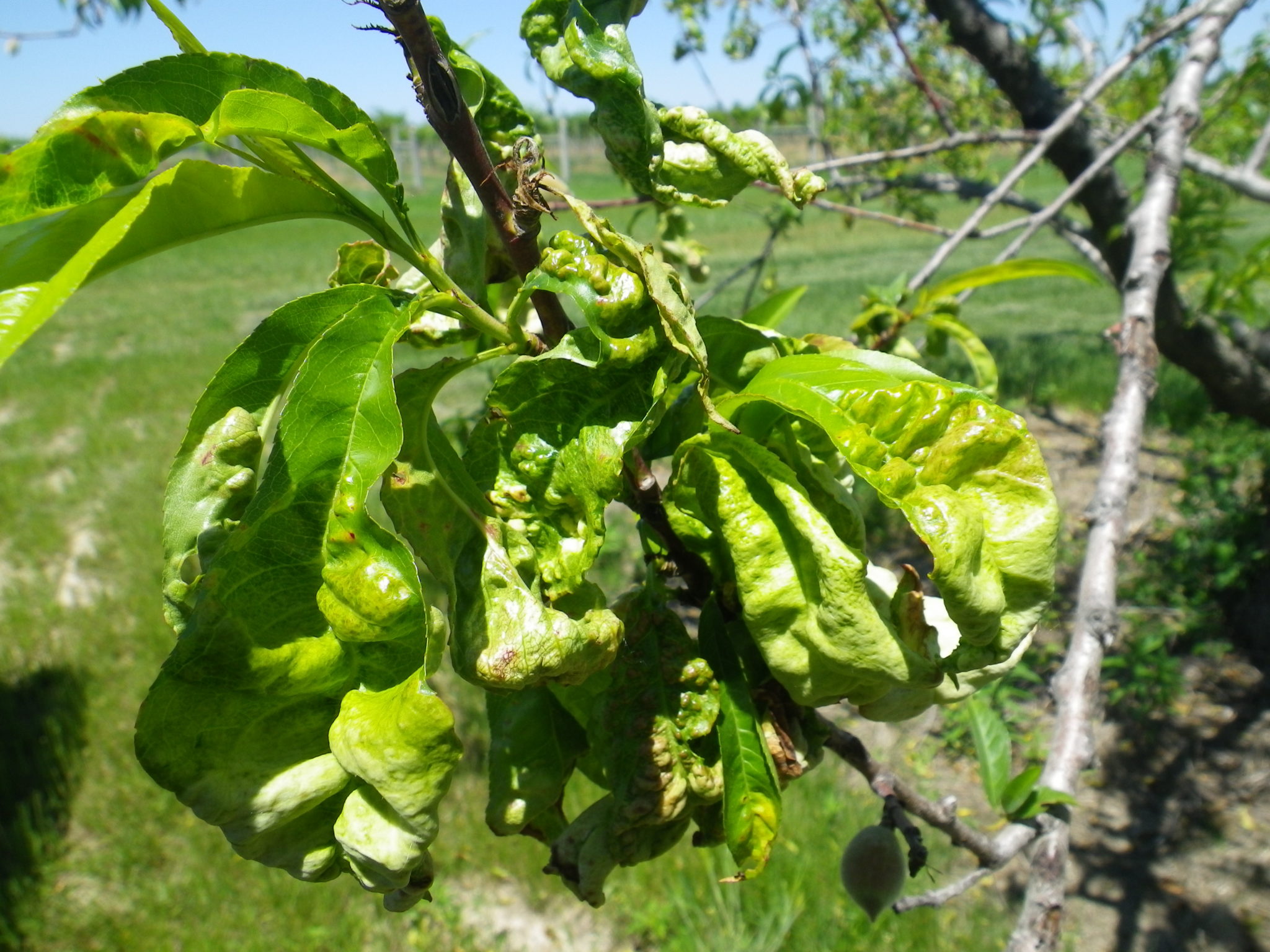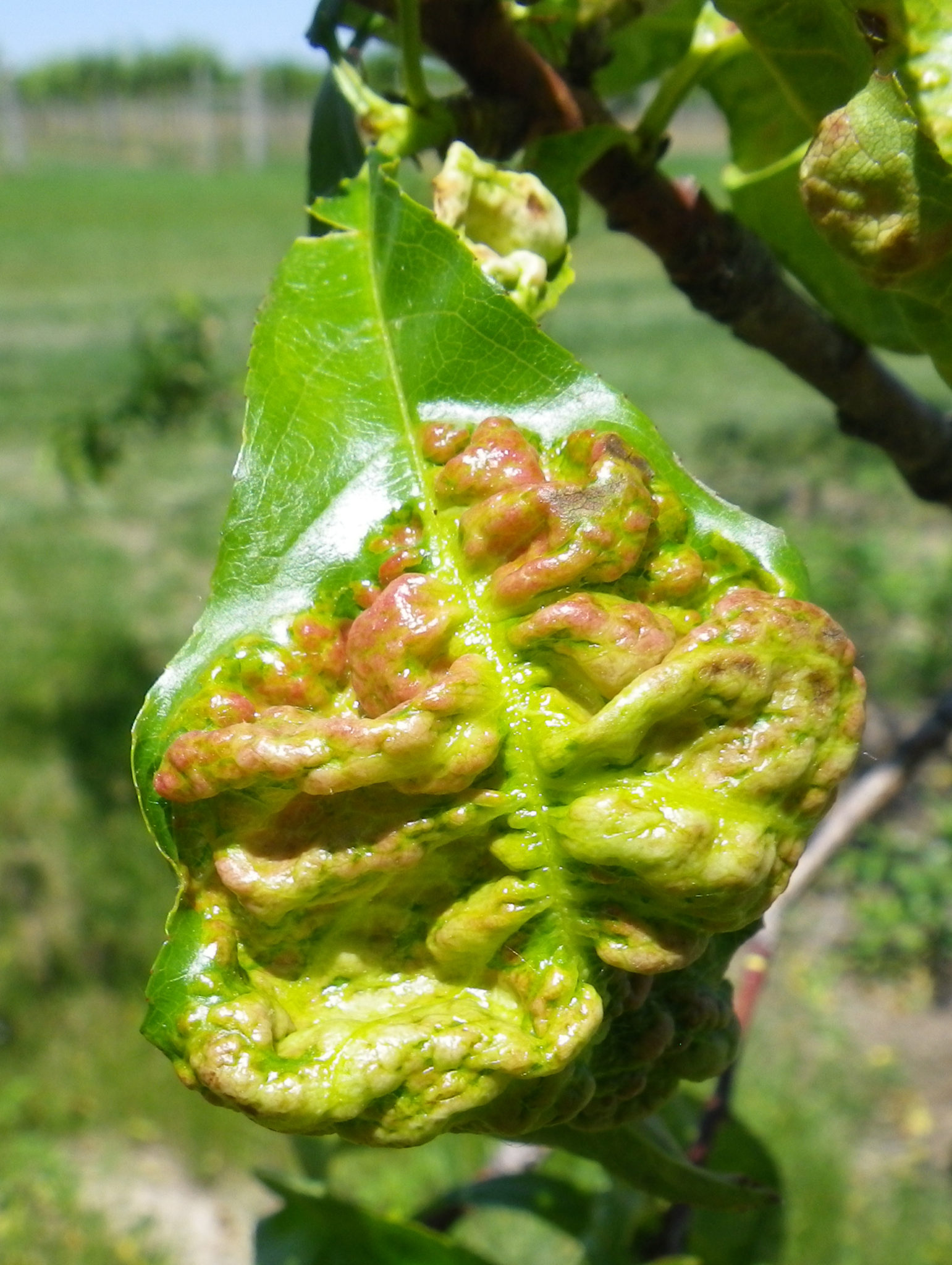Picture of the Week
March 14, 2022
Taphrina Leaf Curl on Flowering Peaches and Nectarines
Gail Ruhl, Senior Plant Disease Diagnostician, retired
To effectively control Taphrina leaf curl fungicides must be applied before bud swell.
If you remember seeing red, curled, distorted, leaves on Prunus spp. last year (Figs 1,2) and wondered what might have caused this symptom, the answer is most likely Taphrina leaf curl. Taphrina is a fungal disease that survives in bark and bud scales and infects peaches and nectarines as well as other ornamental flowering species of Prunus.
The symptoms of Taphrina leaf curl disease are very distinctive (Figure 1) and definitely noticeable when present in Prunus spp. Infected leaves are severely puckered, distorted, thickened and reddish-to purple in color. (Figure 2) Premature leaf drop may also occur.
Click image to enlarge
A single, thorough, preventative fungicide application is recommended during dormancy . Best control is achieved by applying fungicides in late autumn at leaf fall. If you failed to protect trees with a fall application, you may also control this fungal disease by applying protective fungicides prior to bud swell in early spring before green leaf tips are first visible. Several fungicides are recommended for dormant applications. Check the Midwest Fruit Pest Management Guide for the most recent recommendations. Read and follow all label instructions to insure safety and maximum effectiveness.
If temperatures in your area have been such that visible bud swell has already occurred in Prunus spp., making it too late for a dormant application of fungicide then the recommended management for this year is to promote tree vitality through pruning, fertilization and watering.
This is an update from a previous article in the Purdue Landscape Report. Click tab to see previous article.




